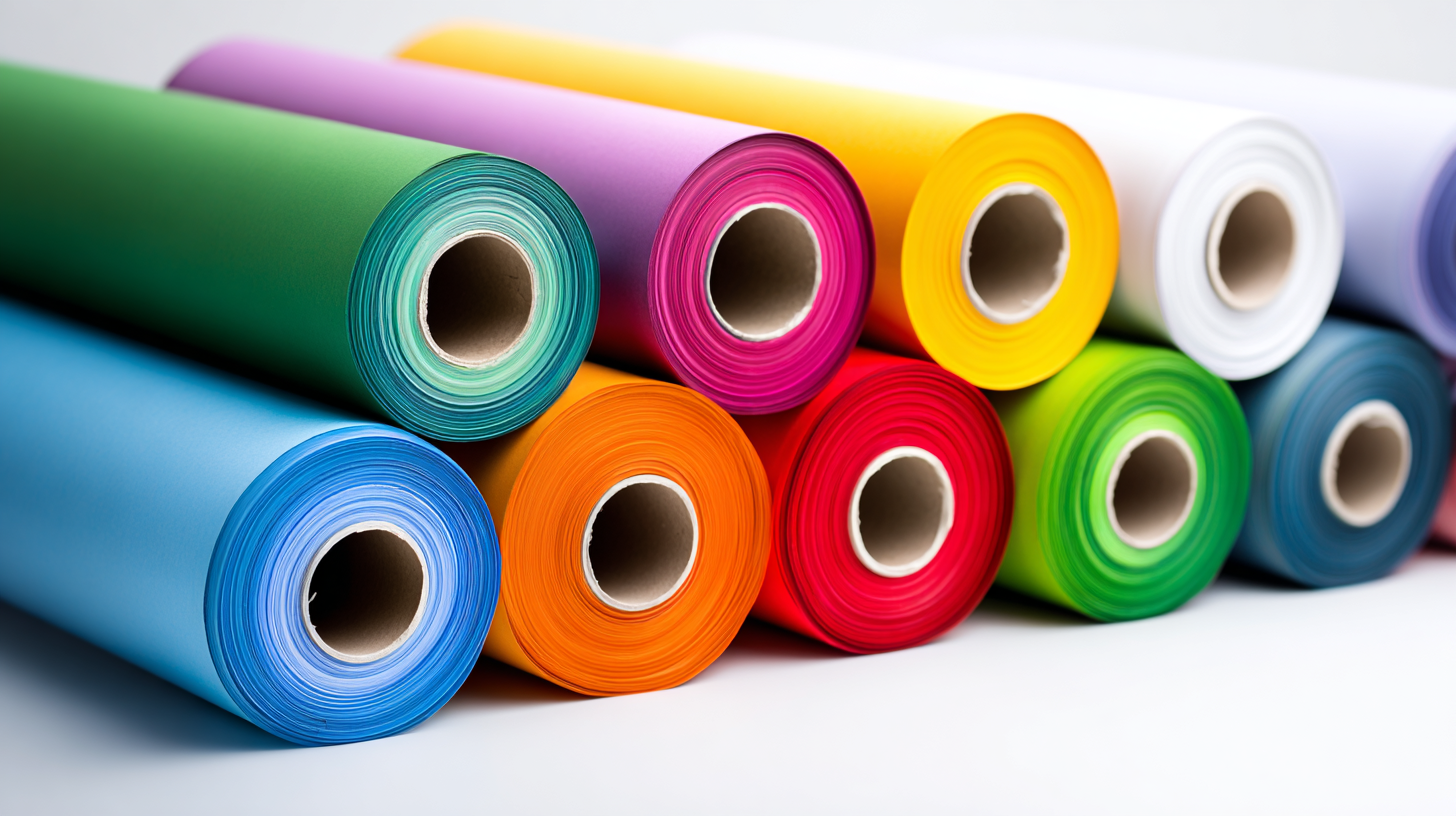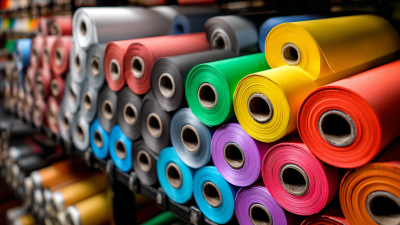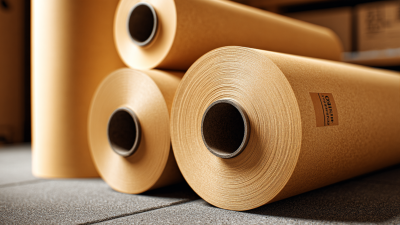The choice of printing paper is crucial in the pursuit of eco-friendly printing solutions, as it significantly influences both environmental impact and print quality. According to a report by Smithers Pira, the global market for sustainable paper is projected to grow at a CAGR of 4.7% to reach $500 billion by 2025, indicating a robust demand for greener alternatives. Furthermore, studies reveal that using recycled and sustainably sourced printing paper can reduce carbon footprint by up to 30% compared to traditional paper options.
 Brands that prioritize eco-conscious materials not only meet consumer expectations but also contribute to the reduction of deforestation and energy consumption. As businesses increasingly seek to align with sustainability goals, understanding the importance of selecting the right printing paper becomes indispensable for achieving effective and responsible printing outcomes.
Brands that prioritize eco-conscious materials not only meet consumer expectations but also contribute to the reduction of deforestation and energy consumption. As businesses increasingly seek to align with sustainability goals, understanding the importance of selecting the right printing paper becomes indispensable for achieving effective and responsible printing outcomes.
When exploring eco-friendly printing solutions, understanding the various types of sustainable printing papers is crucial. There are several categories of eco-friendly papers, including recycled paper, FSC-certified paper, and hemp paper, each offering distinct advantages. According to a study by the Environmental Paper Network, using recycled paper reduces greenhouse gas emissions by about 35% compared to virgin paper. This makes it an excellent choice for businesses aiming to minimize their environmental impact while still achieving high-quality print results.
FSC-certified paper, sourced from responsibly managed forests, ensures that the material is harvested in a manner that protects the biodiversity and ecological processes of the forest ecosystem. Reports indicate that the use of FSC-certified paper can lead to improved forest management practices, which are vital for combating climate change. Furthermore, hemp paper, made from the fibrous stalks of the hemp plant, consumes fewer resources and grows quickly, making it one of the most sustainable options available. It is known to require only half the water used in traditional paper production and does not involve harmful pesticides or herbicides, aligning perfectly with eco-conscious printing initiatives.
| Paper Type | Material Composition | Recyclability | Sustainability Certification | Typical Use Cases |
|---|---|---|---|---|
| Recycled Paper | Made from post-consumer waste | Yes | FSC, SFI | Brochures, Reports |
| Bamboo Paper | Made from bamboo pulp | Yes | FSC | Art prints, Stationery |
| Hemp Paper | Made from hemp fibers | Yes | FSC | Books, High-quality printing |
| Tissue Paper | Made from recycled pulp | Yes | PEFC | Packaging, Wrapping |
| Tree-Free Paper | Made from agricultural waste | Yes | FSC | Notebooks, Flyers |
When considering eco-friendly printing solutions, the weight and thickness of the paper are crucial factors that directly impact sustainability. Paper weight, typically measured in grams per square meter (GSM), plays a significant role in determining the overall environmental footprint of printing projects. Heavier papers often require more resources and energy to produce, while lightweight papers can be more efficient. Choosing the right weight not only affects the quality of the print but also influences the paper's recyclability and its ability to re-enter the paper stream post-consumption.
Thickness, on the other hand, relates to the density and rigidity of the paper. Thicker papers may be more durable and offer a premium feel, but they can also contribute to increased material usage. Sustainable printing advocates recommend selecting papers that strike a balance between thickness and weight, opting for materials that are both robust and recyclable. By carefully evaluating these characteristics, printers can make informed decisions that enhance their eco-friendly practices while still achieving desired aesthetic qualities in their printed products.
As the global demand for paper continues to rise, reaching a projected market size of
USD 15.34 billion in 2025 and expected to
grow to USD 17.6 billion by 2033, the focus
on sustainable printing practices becomes increasingly important. One effective way to
address this issue is through the exploration of recycled paper options.
Utilizing recycled paper not only reduces the need for virgin materials but also minimizes
waste, energy consumption, and environmental degradation. By opting for recycled paper,
businesses can effectively lower their carbon footprint
while still meeting their printing requirements.
In addition to the environmental benefits, adopting eco-friendly printing solutions can
significantly influence design industries. Designers are now encouraged to incorporate
sustainable materials into their work,
creating innovative designs that resonate with environmentally conscious consumers. As
printing technologies advance, the availability and quality of recycled papers are improving,
enabling designers to push boundaries while remaining committed to sustainability. This shift
not only supports the planet but also empowers businesses to enhance their
brand identity as eco-friendly pioneers
in a competitive marketplace.

When selecting paper for eco-friendly printing solutions, identifying certifications for paper products is crucial. Recognized certifications such as FSC (Forest Stewardship Council) and SFI (Sustainable Forestry Initiative) assure consumers that the paper they are purchasing comes from responsibly managed forests. According to the Paper and Paperboard Recovery Action Plan, nearly 66% of paper consumed in the U.S. was recovered for recycling in 2021, emphasizing the growing importance of using sustainably sourced materials.
In addition to these certifications, the use of recycled paper is another significant factor. The Environmental Paper Network’s "Paper Calculator" shows that using 100% recycled paper can save approximately 4,100 kWh of electricity and more than 3,700 pounds of carbon dioxide emissions per ton compared to virgin fiber paper. By choosing papers with these certifications and opting for recycled options, consumers can significantly reduce their environmental footprint while still achieving high-quality printing results.
This chart illustrates the percentage distribution of various eco-friendly paper certifications available in the market, highlighting the importance of selecting certified products for sustainable printing solutions.
Choosing the right printing paper is crucial for fostering eco-friendly practices in the printing industry. Responsible sourcing begins with selecting paper that is derived from sustainably managed forests, ensuring that the production process supports biodiversity and reduces deforestation. By opting for papers that meet stringent environmental certifications, businesses can significantly lower their carbon footprint. The demand for sustainable packaging and paper products is on the rise, reflecting a growing awareness among consumers about environmental impacts, as evidenced by the increasing market size for eco-friendly materials projected to reach significant figures in the coming years.

In addition to sourcing, the disposal of printing paper also plays a vital role in achieving sustainability goals. Integrating recycling initiatives, such as extended producer responsibility frameworks, ensures that both producers and consumers are actively engaged in minimizing waste. Companies are encouraged to adopt recyclable materials as part of their packaging strategies. This not only supports a circular economy but also reinforces a commitment to sustainability within their operational practices. By prioritizing both responsible sourcing and disposal, businesses contribute to a more sustainable print industry, thus aligning their practices with the broader environmental goals that society increasingly values.






